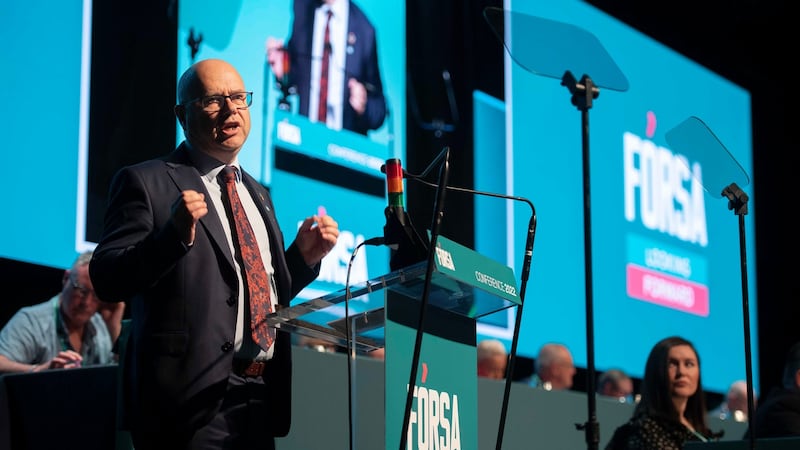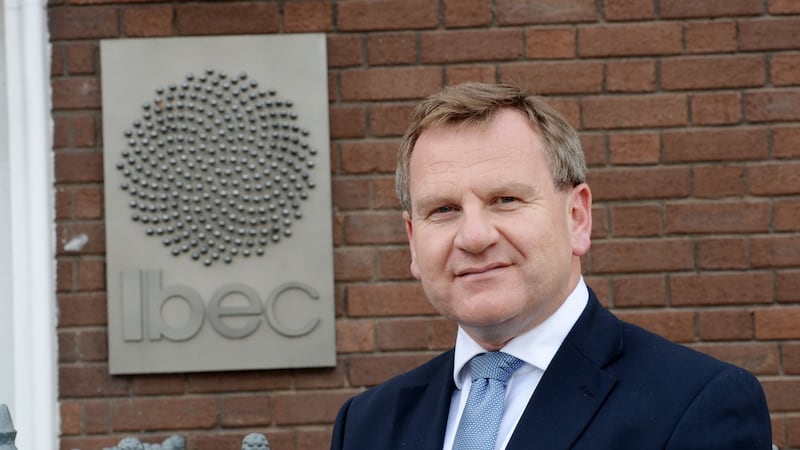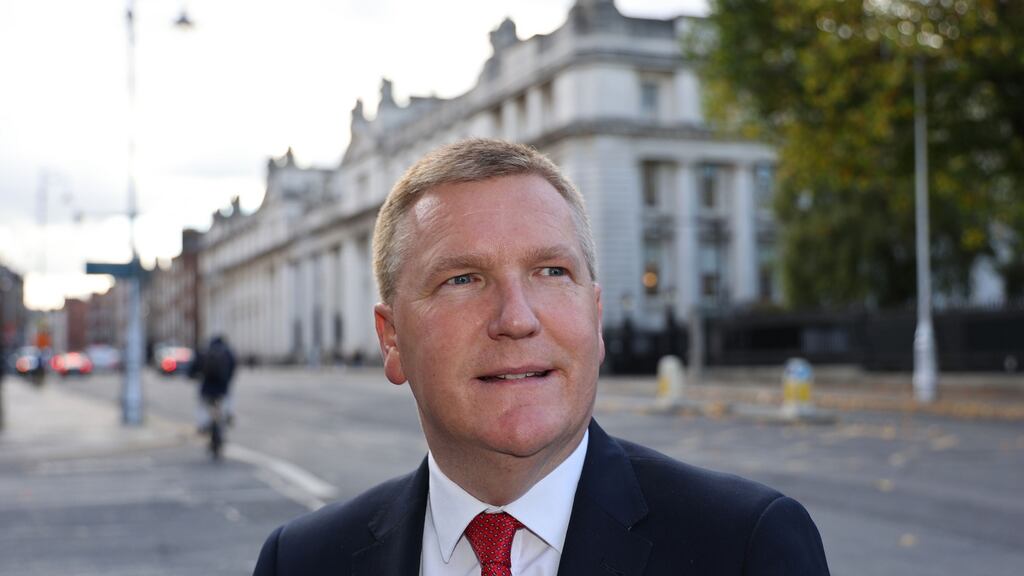At the tail end of last month, there was a meeting between senior civil servants and union officials, who had just triggered a review of the current public pay deal. It followed a rather more star-studded event in the middle of April, a meeting of the Labour Employer Economic Forum (LEEF – the State’s clearing house for industrial relations and bargaining issues). That was attended by the Taoiseach Micheál Martin, Tánaiste Leo Varadkar, Green Party leader Eamon Ryan and both financial Ministers – Michael McGrath and Paschal Donohoe.
At the second meeting, there were presentations on the state of the economy, the public finances, inflation and energy costs. The subject matter was more prosaic, but that belies the importance of the talks.
It’s part of the normal engagement in the run-in to pay negotiations, and one senior political source promises that all the usual furniture associated with pay talks will be present when they kick off properly: “Needless to say there won’t be enough money for everything, so there will be compromises and trade-offs, ballots and 2am agreements.”


But there are new factors with which to contend. The talks are taking place against a febrile and shifting backdrop, where participants are grappling with numerous novel factors. The political stakes are high. The Coalition must keep the industrial peace, avoid breaking the bank, or triggering more inflationary pressures and must be mindful that any deal struck will de facto set the benchmark for the rest of the economy. Public sector unions must deliver for members who are feeling the pinch.
A senior Government source says engagement between unions and officials is set to “intensify” next week: so, what battles lie ahead?
***
The current pay agreement, Building Momentum, was minted in December 2020, as Covid began to roar back. It was struck in a kind of suspended animation, insulated from the normal forces that impact on public pay. There was no vaccine protection; the exchequer was borrowing massively to fund programmes that were backstopping much of the private sector’s wage bill; and Covid had ensured a broad industrial peace, even as workers were asked to do more in extraordinary circumstances. Unemployment was lower than during the heights of the first wave, but was still more than 6 per cent, and was about to take off like a rocket as the economy was shuttered again.
Comparatively short, it covered just two years, and stipulated a 1 per cent pay rise each October, as well as a 1 per cent pot for sectoral bargaining. In the normal run of things, it would be falling due for negotiation now anyway.
But the context has changed. While Covid may have faded away, it has left a wicked cocktail of problems as the legacy of massive monetary intervention mixed with supply chain backlogs to stoke inflationary pressure, which was in turn turbocharged by the war in Ukraine.
The net result for workers is that the incremental gains granted under the current deal are being left in the dust, says Kevin Callinan, general secretary of Fórsa, the largest public service union. The annualised value of each wage increase is 0.25 per cent, but projections for inflation range from 6.25 per cent up. “That’s the scale of the gap if you look at it from what’s in the pay agreement and the cost of living,” he says.
That is, in all likelihood, a gap that cannot be met by an ordinary public pay agreement. For one thing, the officials in the pay and pensions division of the Department of Public Expenditure and Reform would need the smelling salts: such is their parsimony, one insider quipped this week, they would have gotten rid of Ministers and their wages ages ago if they had their way, leaving important decisions up to the wisdom of the Civil Service.
There are, in fairness, genuine concerns about sparking a wage-price spiral by chasing inflated prices with wage increases. The unions believe the Government side has acknowledged two important things: first, that the backdrop has fundamentally shifted. Secondly, they believe Michael McGrath, the most important political actor in this drama, wants visibility on the public pay bill for 2023 well in advance of this year’s budget. That puts a rather tight timeline on things – balloting public sector unions, especially teachers, can be a time-consuming process over the summer.
Callinan says the unions have not demanded that wage hikes keep pace with the cost of inflation. “We haven’t. The way we’ve tried to describe this is the value of the deal versus the reality of the cost of living.”
However, the alternative he is aiming for is bolder and more ambitious than any plan seen for years.
***
It was covered off in a few lines, buried in the very last paragraph of a press release following the talks on April 13th. Given the “serious nature of the economic risks facing Ireland”, it was agreed that LEEF members “would enter a process of dialogue over the next few weeks to explore the potential for developing an agreed approach” to the “challenges and pressures in a strategic and sustainable way”.
For Callinan – and others – the language underplays a chance to address the heady cocktail of forces surrounding pay talks in a more fundamental way. The pressures are such that a broader approach to public pay talks – as part of a wider framework – is now warranted, he says.
“I think there needs to be a combination of measures to address the cost of living crisis which will involve negotiated collectively bargained pay increases,” he says. “There is an opening now to do that in a tripartite way with Government, employers and unions working together for meaningful progress around things like childcare, rent, housing, access to healthcare” as well as moving the minimum wage and addressing “how collective bargaining works across the economy”.
Nobody involved in the process would ever utter the words “social partnership”, but it has some echoes of the Bertie Ahern era bargaining bonanza.
Callinan calls it “social dialogue, or tripartism” and says it is “the way in which most modern progressive European countries would operate”. Precisely what it would look and feel like aren’t nailed down and if it got off the ground, it might be hard to limit the number of organisations that want to participate, which could nudge it back to something more reminiscent of the blockbuster social partnership meetings. But for the union leader, it would knit together pay talks with an overall agreed approach or framework that also reached into budgetary policy.
“The context for the public service pay talks would be influenced if there was a sense that there was going to be a concentrated effort over the coming weeks to try to come up with measures that would lessen the impact of the increased cost of living by taking steps that were going to be agreed and then dealt with as either part of the budget or part of separate Government decisions,” he says.
The idea also finds favour with Danny McCoy, chief executive of employers’ body Ibec. “I think it should be explored,” he says. “In the absence of a framework, people are getting higher wages but are getting frustrated because they still can’t afford services.”
The Ibec chief executive says the old social partnership model was built on modest wage increases, industrial peace and tax cuts. “That formula is not appropriate for the circumstances we’re in now. We need the first two but the tax cutting agenda is not appropriate, what people need is spending by the Government on what people need,” he says. A situation where employers pay into funds that in turn provide for services, rather than chase inflation with wage increases, is worth considering, he says, adding: “The most catastrophic mistake would be to try to index wage increases to price increase.”
***
The first thing to determine, Callinan says, is whether a new framework is on the table or do the upcoming talks on public pay exist in isolation. If it’s the latter, the knock-on effect is clear for the union side. “If it’s just a pay deal… there is more pressure on to provide greater pay increases if people’s cost of living hasn’t been lessened by other measures that have been taken,” he says.
Union officials believe the Taoiseach is enthusiastic about the idea and there is at least curiosity about it elsewhere in Government, with one senior source open to exploring “a wider bargain involving changes to tax, reduced childcare costs, more like the national wage agreements of old”.
A wider deal would cover the public sector and much of the private sector with pay increases “moderated by other Government actions such as tax reductions [or] reduced cost of living measures”, the same source offers – describing it as a “wider bargain”.
Michael McGrath, who will lead the Government side in negotiations, secured Government approval to begin talks but has been modest in his public pronouncements so far. In April, he told the Irish Examiner he wants an extension of the current deal and “can live without a deal” as well. “There is certainly a question to be answered as to whether this is an appropriate time to enter into a medium to long-term agreement when you see inflation at the level it’s at currently,” he told the newspaper.
He emphasised on Friday that it “cannot simply fall to the pay issue to address the full spectrum of inflationary pressures”, noting the Government had other levers at its disposal. He expected further changes to income tax and social welfare rates in the budget in October, for example, to reduce the burden people faced “so it doesn’t solely fall to the pay bill to address the inflationary pressures. But undoubtedly, it can and will play a role if we can reach an agreement over the period ahead.”
If the backdrop is too turbulent for anything but an extension, that would suggest a maximalist reordering of the entire architecture for pay bargaining would be a bridge too far.
An extension to the current deal would in many ways be simpler – narrowing the focus to a simpler bargain of pay increases for “productivity gains” sought by the Government. If that comes to pass, Callinan believes (perhaps unsurprisingly) there is no need to add to the productivity elements already detailed in the current agreement, many of which remain to be completed.
Either way, he wants the Government to clarify the range of its ambitions sooner rather than later. “There needs to be an answer very quickly as to whether Government are interested in some sort of a broader social wage piece, and if they are, that needs to be discussed and concluded within a few weeks,” he says, arguing significant progress needs to be made by the middle of June: “The ball is in their court at the moment.”
In keeping with tradition, he is not slow to ramp up the rhetoric and the pressure on the Government. “I can tell you this, I don’t think we’re going to be sitting around for the next few months in the hope or belief that something is going to happen,” he says, promising that in the absence of Government action on cost of living, “we are going to have to make our own decisions” and “in that scenario, we’ll have to look at our options including how we campaign and mobilise on the issue explicitly.”
Meaning?
“We would look at how we would try to get our message across in the time-honoured way,” he says, promising: “We’re not going to be just patsies waiting for something to happen.”
Whether a broader shake-up or a bare bones deal is on the table in the short term, there is a growing sense that something more fundamental must be done to react to new pressures in the economy and labour market. “The horse is running, it’s not as if we’ve opened the stable door,” says Danny McCoy. “It’s how to bring it under some sort of control.”








